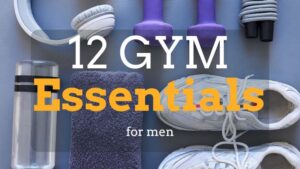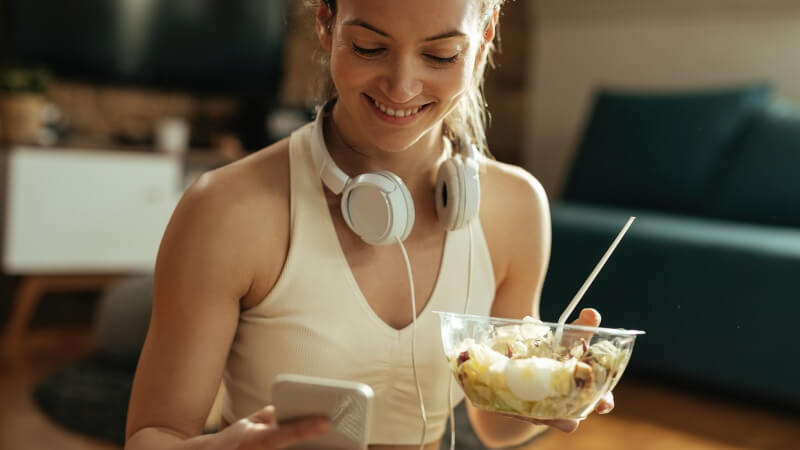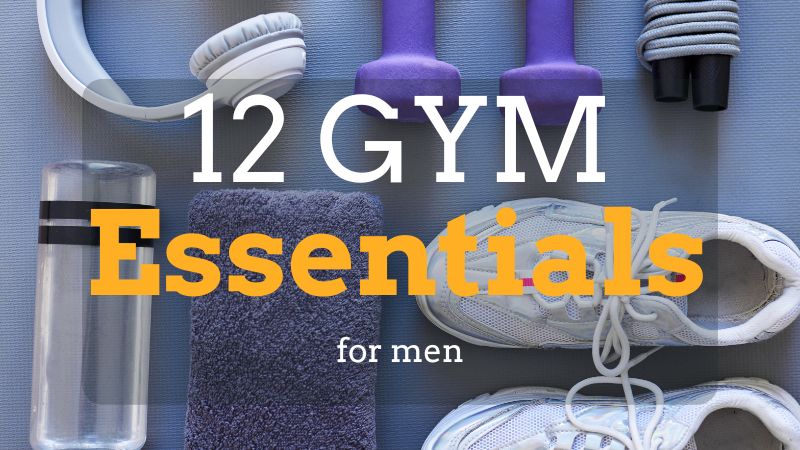
Gym Essentials For Women:A Complete List
Enthusiasts who never miss a session, understanding the gym essentials for women is crucial, not just for what to wear but also for what to

Water is an invaluable asset we often overlook, so many might not ponder on how to save water at home.
Vital for our well-being, clean water’s importance is often unrecognized, with its limited availability, even in North America. Its scarcity underlines the need for us to learn how to save water at home.
Events like droughts and diminishing rivers influence our lifestyle and resource utilization.
Whether residing in a city with a public water system or in a rural area with a private well, steps can be taken to minimize water use at home.
Proactive adoption of water-saving measures equips us to handle significant environmental and climatic shifts both individually and collectively.
Thankfully, numerous methods exist to decrease household water consumption, simplifying conservation.
This article presents various ideas and suggestions on how to save water at home.
The primary areas of water consumption in a household are the bathroom, kitchen, laundry, and garden. Initiatives to cut down water wastage can be implemented in each of these sectors.
The majority of water conservation methods don’t demand substantial financial outlays, but rather a shift in your daily water usage patterns. Individually, these water-saving practices might appear trivial, but collectively, they can create a substantial effect.
Detecting and mending leaks can significantly reduce your water expenses. Dripping faucets and pipes can increase your annual costs by hundreds.
To address leaks, first, you must locate them. They often hide in areas like basements and behind walls. Utilizing the EPA’s guide for home leak detection can help you identify unnoticed water wastage. Once detected, you can proceed to fix them.
Leaks in toilet tanks, often due to malfunctioning flappers controlling the water level, are common. Replacing the flapper prevents continuous water flow in the toilet, thereby saving on your water bill.
Small adjustments in the usage of your kitchen and laundry appliances can lead to significant water savings.
Ensure that your dishwasher and washing machine are fully loaded before running them. This approach can conserve 15 to 45 gallons per washing machine load and 5 to 15 gallons per dishwasher load.
Steer clear of using the permanent press cycle and additional rinses in your washing machine. These functions consume extra gallons of water that aren’t necessary for everyday laundry.
If you lack a dishwasher, it’s worth considering purchasing one. Dishwashers generally consume less water than washing dishes by hand. Research shows that dishwashers use less than 20% of the water required for hand washing, utilize about half the electricity, and need less detergent.
If a dishwasher isn’t feasible due to cost or space constraints in your kitchen, you can still alter your dishwashing habits. Opting to soak dishes in a sink filled with soapy water and scrubbing them, rather than letting the faucet run continuously, can result in significant water savings.
Adopting water-efficient and energy-efficient appliances in your laundry and kitchen requires an initial outlay, but it leads to lower water and energy bills.
For instance, a conventional top-loading washing machine may consume up to 50 gallons per laundry load, whereas a more efficient front-loading model typically uses about half as much.
Consider upgrading to Energy Star and Watersense certified appliances when it’s time to replace your laundry machines and dishwasher. The savings in water and energy usage are beneficial for both your finances and the environment.
Installing low-flow bathroom fixtures, such as showerheads and faucets, can lessen water usage in your bathroom without compromising your requirements.
The U.S. Environmental Protection Agency (EPA) endorses water-efficient bathroom fixtures like toilet tanks, showerheads, and sinks with the Watersense label. Products with this label are designed to use at least 20% less water than conventional fixtures.
A great starting point is replacing your old toilet tank, which might use up to seven gallons per flush, with a high-efficiency model that only uses about 1.28 gallons per flush.
If replacing fixtures isn’t an option right now, you can still decrease water usage per flush by placing a displacement device, such as a brick or a water-filled bottle, in the toilet tank.
Wrapping your hot water pipes in insulation aids in faster and more efficient water heating. This measure reduces the time required to heat water, ultimately saving energy. Insulation also decreases water consumption, as it shortens the wait for hot water in showers and other uses.
Utilize an under-sink water filter to conveniently fill a pitcher with fresh, filtered water for refrigeration. Having a pitcher of drinking water readily available eliminates the need to run the tap waiting for cooler water, thereby conserving water.
The garbage disposal in your kitchen consumes considerable water, roughly a gallon daily per person, and it disposes of kitchen scraps that could instead be used for composting.
Starting a compost pile is straightforward and offers a more environmentally friendly way to utilize food waste like vegetable peels, rather than discarding them. You can also compost certain types of paper, which would otherwise end up in the trash.
Reducing the length of your showers can significantly decrease your home’s water usage. Limiting showers to five minutes can use just 10 to 25 gallons, especially if you turn off the water while soaping. Shutting off the showerhead during lathering requires little effort but can lead to substantial water savings.
Showers generally consume less water than baths, with a bath taking about 30 gallons compared to a brief shower. While baths offer valuable relaxation and self-care, conserving water is also crucial.
For those who prefer baths, consider filling the bathtub only halfway rather than to the brim.
To reduce water consumption outdoors, opt for sweeping your driveway instead of using a power washer. Apply mulch to your ornamental plants to prevent them from drying out. You can also use the compost you’ve made, as it enhances soil water retention.
Prefer using a traditional watering can over a garden hose for plant irrigation. This practice allows you to manage the quantity of water dispensed to your plants more effectively.
Embracing xeriscaping, which involves creating landscapes that require little to no watering, is becoming popular. Xeriscapes typically feature plants that thrive without artificial watering, relying solely on natural rainfall, thanks to their native desert origins.
Start by introducing native and drought-resistant plants into your garden to cut down on water usage. Consider drought-resistant grass varieties to replace more water-intensive ones.
Not only does this approach reduce your water bill, but using native plants also fosters a natural habitat for birds and other wildlife, providing them with both shelter and food.
Lawns are heavy water consumers, and it’s challenging to see them turn brown in summer due to water scarcity. However, watering your lawn during the cooler morning hours can reduce water usage by minimizing evaporation before the roots absorb moisture, leading to less frequent watering needs.
Alternatively, consider replacing your lawn with stones, a seating area, pollinator-friendly flowers, or a vegetable and herb garden. While lawns provide beauty and play space, more people are choosing different options to preserve the environment.
If you prefer to keep your lawn, maintaining taller grass (about three or four inches) can help it retain moisture longer. Lawns typically require less frequent watering than commonly thought, as many grass types have robust dormant and recovery abilities. Deep soaking every four to eight days is more effective than regular light sprinkling, as it promotes healthier root growth.
Opt for water-saving sprinklers and irrigation setups in your garden. Additionally, repurpose any leftover water from drinking bottles and glasses for watering your lawn and plants.
Remember that grass often enters a dormant phase during dry seasons. A mature lawn will naturally revive once the weather becomes more conducive. Therefore, if your lawn dries out and turns yellow in summer, it’s okay to let it rejuvenate on its own with the return of rain.
Implementing rainwater harvesting is an effective method for conserving water. By installing a rain barrel, you can collect rainwater runoff for various purposes, such as watering plants, cleaning the driveway, and other outdoor activities.
Rainwater barrels are available at local hardware stores, or for a DIY challenge, you might find it rewarding to build your own rainwater collection system.
Conducting a home water audit can pinpoint areas in your home where water conservation is possible. This service, often offered by local governments, may be available at no cost to households meeting certain income criteria.
A home water audit not only identifies potential areas for improvement but also provides recommendations for enhancing water efficiency. Armed with insights into your water usage, you can then take informed steps toward water conservation at home.
After implementing water conservation measures, assess if they are enhancing your water efficiency. A simple method to gauge the success of your efforts is by monitoring your water meter and bills. Over a billing cycle, you should observe a decline in both metrics, reflecting reduced water consumption.
The environmental benefits of your water-saving actions might not be immediately apparent, but they are enduring.
Water conservation is crucial globally, even in regions with abundant water, due to the finite nature of water resources and the impact of global warming.
Remember, every small action counts. In the words of Mother Teresa, “Not all of us can do great things. But we can do small things with great love.” This sentiment aptly applies to individual efforts in water conservation. Just like how to save water at home can start with small, simple steps, each contributing to a significant collective impact.
What are some alternative methods to conserve water in the garden besides those mentioned in the article?
While the article focuses on traditional methods like mulching and using watering cans, other techniques include installing a drip irrigation system, which targets water directly to plant roots, or choosing timed irrigation systems to water plants during the most efficient times of the day.
How can I involve children in home water conservation efforts?
Educating children about the importance of water conservation can be fun and engaging. Simple activities like timing each other to ensure short showers, checking for leaks together, or involving them in rainwater harvesting projects can foster good water-saving habits from a young age.
What are the benefits of using a smart water bottle in relation to conserving water at home?
A smart water bottle, which tracks your water intake and reminds you to drink, can indirectly aid in water conservation. By promoting efficient water use for hydration, it reduces the need for frequently filling and potentially wasting water, aligning with the conservation stratesies mentioned in the article.
Can water-saving habits at home positively impact the local community?
Absolutely. Individual efforts in water conservation can collectively lead to significant reductions in community water demand. This not only eases the strain on local water resources but can also lower treatment and distribution costs, benefiting the entire community.
Are there any recommended apps or technology to help monitor and reduce water usage at home?
Yes, there are several apps and smart home technologies available that can track your household’s water usage in real-time, identify leaks, and provide tips on reducing consumption. These technologies complement the strategies discussed in the article and offer a modern approach to water conservation at home.


Enthusiasts who never miss a session, understanding the gym essentials for women is crucial, not just for what to wear but also for what to

A common myth circulating in the fitness world is the belief that a gym diet plan is unnecessary. Many seem convinced that they can simply

The average bench press, often referred to humorously in gyms as ‘How much ya bench’ or ‘whaddaya bench?’, stands as a quintessential measure of strength

Nowadays, we always seem to be packing a bag for something. Whether it’s getting ready for work with your messenger bag or briefcase, filling up

Enthusiasts who never miss a session, understanding the gym essentials for women is crucial, not just for what to wear but also for what to

A common myth circulating in the fitness world is the belief that a gym diet plan is unnecessary. Many seem convinced that they can simply

The average bench press, often referred to humorously in gyms as ‘How much ya bench’ or ‘whaddaya bench?’, stands as a quintessential measure of strength

Nowadays, we always seem to be packing a bag for something. Whether it’s getting ready for work with your messenger bag or briefcase, filling up
Copyright © 2025 remindsmartbottles. All Rights Reserved.
Copy the coupon code below and fill it in when you purchase to enjoy!
newuser